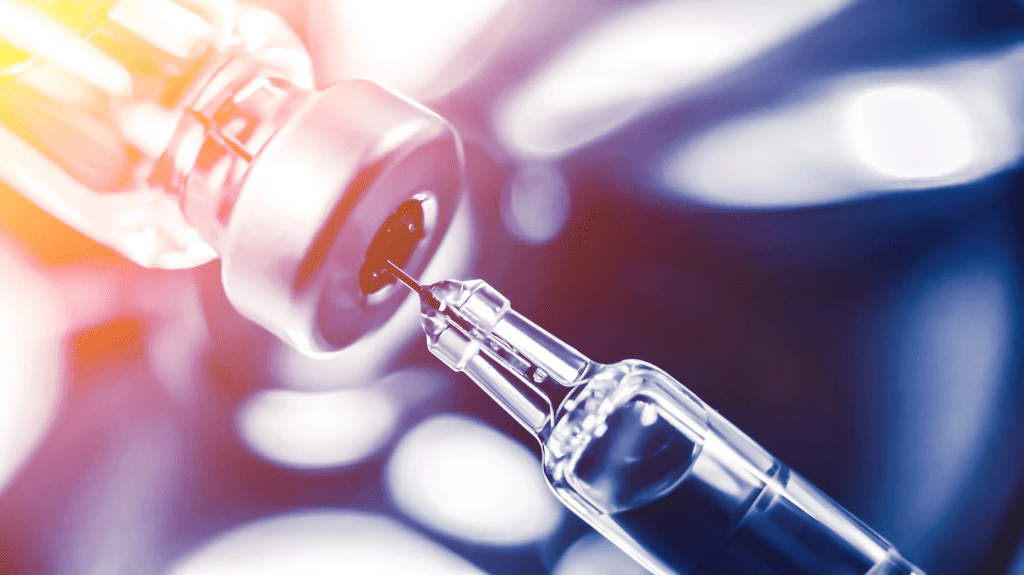
What is Peptide Therapy and When is it Used?
In recent years, peptide therapy has gained significant attention as a promising option for enhancing health and addressing various medical conditions. Peptides, small chains of amino acids, play crucial roles in our bodies, and peptide injections have emerged as a popular method for reaping their benefits. In this comprehensive guide, we’ll explore what peptide injections are, their uses, and more.
Peptide therapy is a cutting-edge medical approach that utilizes peptides to influence and regulate various physiological processes in the body. When used therapeutically, peptide therapy aims to optimize specific bodily functions and promote overall well-being.
At Ways2Well, we understand the incredible potential of peptides and their role in regulating essential biological functions. Peptides are like the “generals” of your cellular army, orchestrating various healing tasks crucial to your health and well-being. These tiny molecules signal and trigger the body’s cells and molecules to perform specific functions, ensuring your body operates optimally.
With over 7,000 naturally occurring peptides identified to date, Ways2Well’s peptide therapy is a cutting-edge, customized treatment regimen designed to restore the presence of these ultra-rejuvenating growth factors in your body. By optimizing the levels of these peptides, your cellular regrowth and efficiency can be enhanced, leading to overall improved well-being.
What are Peptide Injections and Why are They Popular?
Peptide injections involve the direct administration of specific peptides into the body via subcutaneous or intramuscular routes. These injections are becoming increasingly popular due to their potential to target and address a wide range of health concerns effectively. Unlike traditional oral supplements, which may be less bioavailable and subject to digestion, peptide injections provide a more direct and efficient way to introduce these beneficial molecules into your system.

What Do Peptide Injections Do?
Peptide injections can be tailored to address a wide array of health concerns and conditions. Generally, research indicates that peptides can help with:
- Growth Hormone Production: Peptides like Ipamorelin, Sermorelin, and Tesamorelin, have shown promise in increasing growth hormone production, which can stimulate the growth of bone and cartilage. For adults who have a growth hormone deficiency, injections can help to increase exercise capacity, bone density, muscle mass, and overall energy.
- Healing and Recovery: BPC 157 and GHK Cu can improve performance and recovery from injuries. These peptide injections have the potential to repair tears and build cartilage, and its anti-inflammatory properties have even been shown to slow the effects again in the skin.
- Weight Loss and Fat Burning: Peptides in the GLP-1 family, otherwise known as Glucagon-like Peptide-1 Receptor Agonists are some of the safest and most effective peptides to achieve sustainable weight loss.
- Cognitive Function and Stress Relief: Peptides such as Dihexa and Semax show effectiveness in restoring clarity, improving concentration, memory and other cognitive functions, as well as diminishing oxidative stress and inflammation in the brain.
- Sexual Function: Melanotan, Oxytocin, and Bremelanotide PT-141 can be effective in increasing sexual function and arousal in both men and women by targeting the central nervous system, rather than the vascular system.
- Skin and Hair: Peptides for skin and hair work in several ways, including increasing blood circulation to the follicles and prompting the body’s production of collagen and elastin. When it comes to hair growth and restoration, it’s always best to opt for peptide therapy sooner rather than later. Regardless, we can devise a therapy plan suited to your needs and goals.
For a full list of peptides available at Ways2Well, view our peptide therapy page.

What Are the Benefits of Peptide Injections Over Oral Supplements?
One of the key advantages of peptide injections is their superior bioavailability. When ingesting peptides orally, they may be broken down by digestive enzymes and absorbed less efficiently. In contrast, injections allow peptides to bypass the digestive system and enter the bloodstream directly, ensuring a higher concentration reaches the target tissues. This makes peptide injections a more potent and effective delivery method.
How Often Do I Need Peptide Therapy?
The frequency of peptide therapy injections can vary depending on your individual needs and the peptides used. Some individuals may require daily injections for a specific period of time, while others may only need them weekly, monthly, or even a one time therapy. Your healthcare provider will design a personalized treatment plan tailored to your goals and health conditions.

What Are the Most Effective Peptide Injection Therapies?
The effectiveness of peptide injection therapies can vary based on individual factors and health goals. Some of the most popular and well-researched peptides used in therapy include:
- Semaglutide: Used to achieve sustainable weight loss.
- BPC-157 and GHK Cu: Known for its potential to promote tissue healing and reduce inflammation.
- CJC-1295 and Ipamorelin: Commonly used for boosting growth hormone levels and enhancing weight loss.
- Semax and Dihexa: Believed to improve cognitive function and mood.
A Holistic Approach to Healthcare
Ways2Well takes a holistic approach to healthcare, recognizing that true well-being involves more than just treating symptoms – it’s about addressing the root causes of health issues. We believe in the power of comprehensive blood labs to provide essential insights into your health. This knowledge is instrumental in determining the best solutions to optimize your health and prevent the onset of chronic illnesses and diseases.
Don’t wait until you’re sick to prioritize your health. Ways2Well is here to support you on your journey to better health, offering comprehensive solutions that encompass everything from peptide therapy to personalized treatments to prescription medications and supplements. Choose Way2Well, and take the first step towards a healthier, happier you.
Get started today and experience the benefits of peptide injections first-hand.








